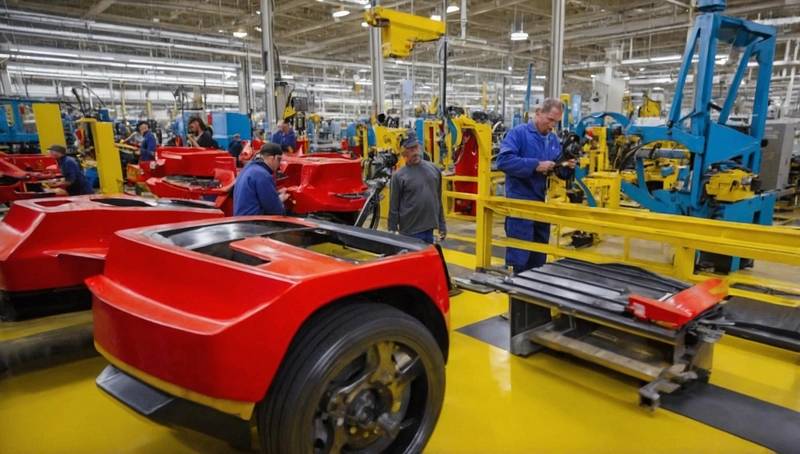U.S. Manufacturing Slowdowns and the Push Toward the Best Sourcing Agent in Asia
The American manufacturing sector has faced notable disruptions over the past year. Labor shortages, rising energy costs, raw material inflation, and post-pandemic bottlenecks have slowed production capacity across key industries. As companies look for viable alternatives to maintain supply consistency, many are pivoting to reliable international sourcing partners. This trend has renewed focus on working with a bestsourcing agent capable of managing end-to-end procurement from Asia.
Manufacturers and retailers in the U.S. are under increasing pressure to reduce costs while maintaining product quality. Internal production hurdles are pushing companies to evaluate outsourcing strategies through third-party procurement experts. The demand for high-volume, low-latency output with transparent pricing is now being met more effectively through Asia-based partners.
Challenges in the U.S. Manufacturing Sector
Production facilities across the Midwest and southern United States have reported delays due to labor unavailability. Wages have increased significantly in a bid to attract skilled workers, adding further strain on operating budgets. At the same time, logistics inefficiencies—particularly in domestic trucking and last-mile distribution—have pushed American companies to re-evaluate their sourcing structures.
Traditional “Made in USA” models, while attractive for some segments, are struggling to keep pace with current supply chain demands. This shift is not temporary. Economic indicators suggest that these slowdowns are part of a broader structural recalibration in American manufacturing.
To maintain delivery timelines and pricing structures, businesses are looking outward—toward highly scalable sourcing ecosystems that offer manufacturing depth, supplier diversity, and built-in risk mitigation. This is where the role of a bestsourcing agent asia becomes pivotal.
The Asian Advantage in Production Scalability
Countries like China, Vietnam, India, and Indonesia continue to operate massive manufacturing corridors that specialize in electronics, textiles, automotive components, and consumer goods. These hubs are supported by experienced factory networks, skilled labor, and highly efficient export infrastructure.
American businesses are increasingly tapping into these advantages through professional intermediaries. A bestsourcing agent provides the expertise required to evaluate suppliers, manage quality control, and ensure compliance with U.S. safety and customs regulations.
Rather than attempting to build direct relationships in unfamiliar markets, companies benefit from a single-point-of-contact who handles all sourcing and logistics complexities.
Why Agents Are Essential in Today’s Global Trade Model
Navigating overseas procurement without localized support introduces significant risk. Language barriers, intellectual property concerns, and unfamiliar quality standards can jeopardize an entire supply chain. This is especially true for small and medium-sized American firms that lack in-house international procurement teams.
A bestsourcing agent asia offers more than just supplier recommendations. They provide on-ground presence, factory audits, negotiation leverage, and real-time reporting. These capabilities allow U.S. firms to maintain supply chain transparency and accountability while reducing costs.
More importantly, the agent model offers flexibility. If a supplier in China becomes too expensive, your agent can immediately initiate alternatives in Vietnam or Bangladesh. This adaptability is becoming essential in a world where geopolitical and economic conditions shift rapidly.
Leveraging Cost Efficiency and Quality
For U.S. businesses, the key appeal of working with a bestsourcing agent is the ability to lower unit production costs without sacrificing quality. Agents streamline the procurement process through vendor prequalification, batch inspection systems, and lean logistics coordination.
Asian suppliers offer competitive pricing due to lower labor costs and economies of scale. However, finding the right factory with the right certifications and reliability is difficult without localized knowledge. That’s where sourcing agents offer critical value.
Many agents also help negotiate exclusive production agreements, assist in custom packaging, and manage after-sales support. This full-service approach gives U.S. firms the bandwidth to focus on marketing and distribution rather than procurement operations.
Risk Mitigation and Inventory Stability
Working with a bestsourcing agent asia reduces the risks of over-dependence on fragile supply nodes. Agents typically have supplier networks in multiple countries. If one region is impacted by natural disaster, political unrest, or export restrictions, sourcing can quickly shift to alternate hubs.
Inventory risk is further mitigated by smarter planning tools and warehousing partnerships that agents often offer. With access to near-shore and bonded warehouses, businesses can stock buffer inventory closer to their customer base.
Sourcing agents also manage documentation, compliance, and insurance—further reducing exposure to fines, delays, or regulatory breaches.
Future-Proofing Procurement
U.S. companies that diversify their sourcing strategy today will be more resilient tomorrow. Domestic production can remain a part of the mix, but reliance on it alone is proving increasingly unsustainable. In contrast, a global strategy managed by an experienced bestsourcing agent provides adaptability and cost optimization.
Procurement trends suggest that agent-led sourcing from Asia will remain dominant through 2025 and beyond. The current slowdown in U.S. manufacturing only accelerates this adoption.
Conclusion
The transformation underway in global manufacturing presents both a challenge and an opportunity. As American factories face labor and production bottlenecks, companies must look beyond national borders to remain competitive. Partnering with a bestsourcing agent provides access to a scalable, cost-effective, and professionally managed procurement network.
A bestsourcing agent asia bridges the gap between U.S. business needs and Asian production capabilities. With the right sourcing strategy, American firms can not only overcome domestic slowdowns but also position themselves for stronger, more resilient supply chains.

